John Gibson – his life in Rome
John Gibson (1790-1866) was Liverpool’s leading sculptor of his day. He established a British school of artists in Rome and built one of the most successful and profitable workshops in the city. While not much is known about Gibson’s relationships or sexuality, recent research exploring the colonial legacies of his Liverpool patrons has given us new insights into his life and work.
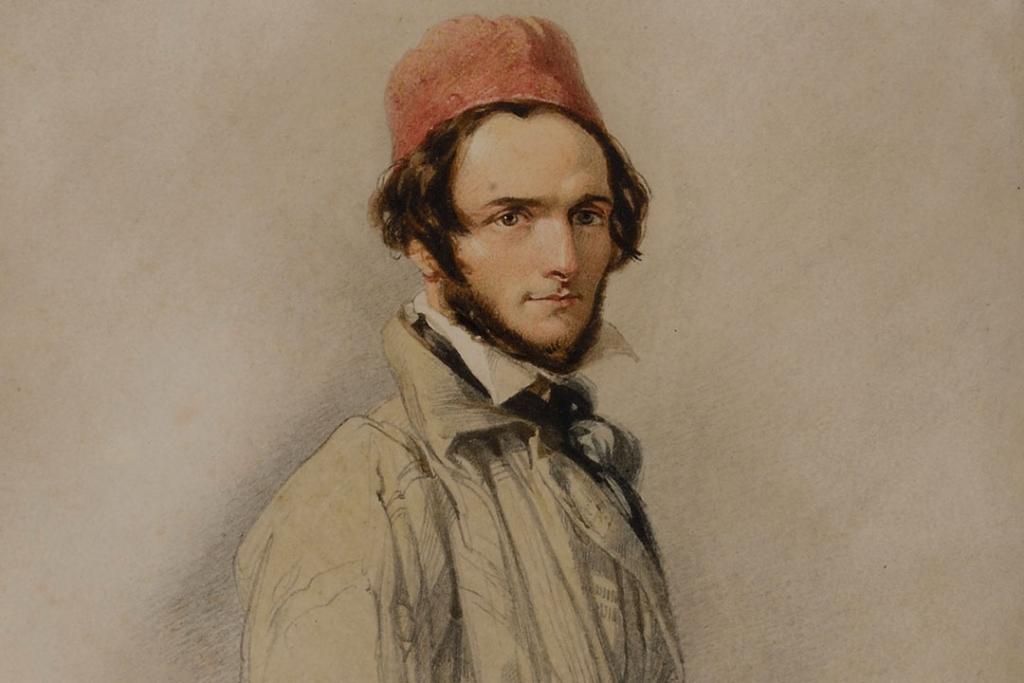
Born in Gryffin near Conwy, Caernarvonshire, Gibson moved to Liverpool with his mother and father as a young boy. He soon began copying drawings and plaster casts belonging to John Turmeau (1777-1846), a print seller in Liverpool’s Church Street. Gibson later became chief carver at the marble masons ‘Samuel and Thomas Francey’s’ at Brownlow Hill where he met the renowned Liverpool art collector, banker and abolitionist William Roscoe (1753-1831).
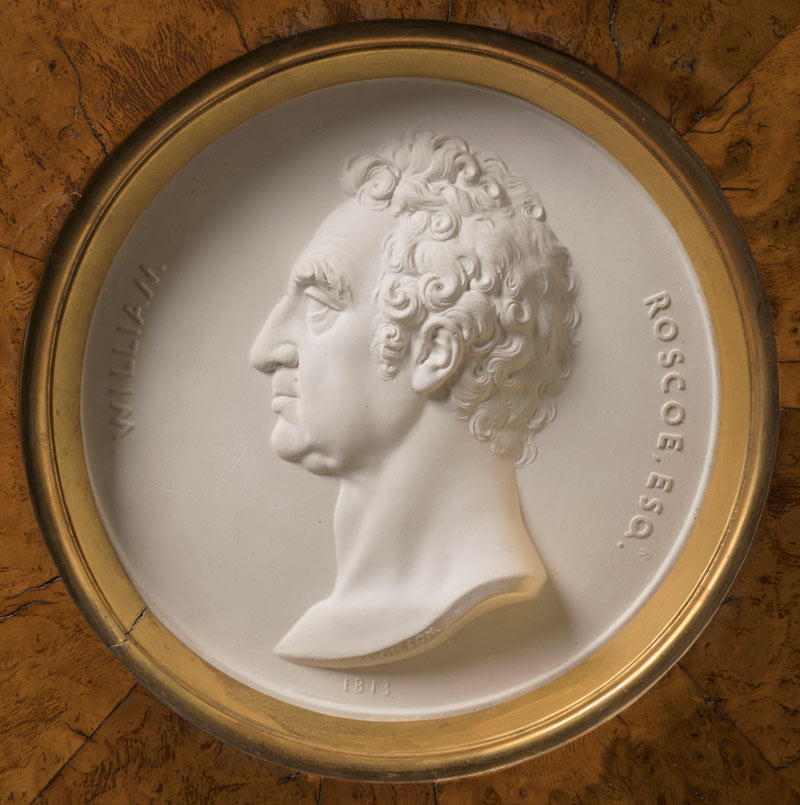
William Roscoe by John Gibson (1813) Walker Art Gallery
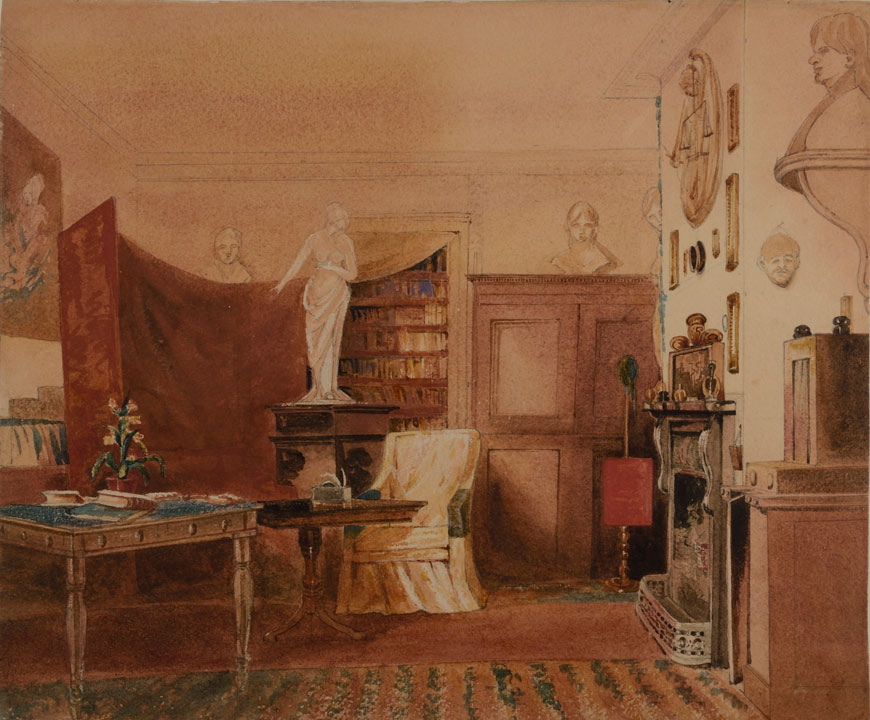
William Roscoe's Study at Lodge Lane, copied after Samuel Austin (after 1822) Walker Art Gallery
Early patronage from Roscoe gave Gibson access to his study and collections, which influenced his lifelong interest and admiration for the works of ancient Greece. Particularly inspiring were the writings of the German art historian Johann Joachim Winckelmann (1717-1768). Winckelmann was gay, and his observations of male nude sculpture were noticeably sexualised at the time. He derived homoerotic sensations from the male nude transforming it into a private object of sexual attraction for pleasure and admiration.
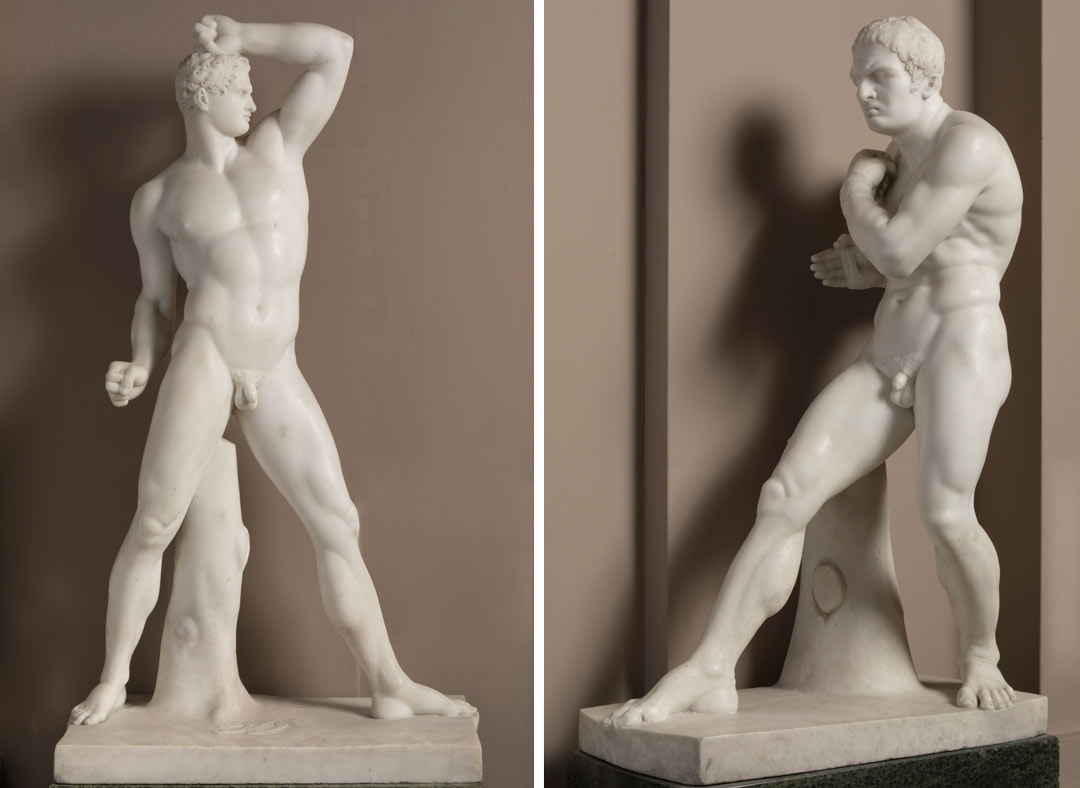
Creugas and Damoxenus by Antonio Canova (late 18th century), Walker Art Gallery
In the 19th century, Italy in particular was seen as a liberating environment that allowed people to explore their desires more freely, and it was here that Gibson was to settle. He moved to Rome in 1817, where he studied under the renowned neoclassical sculptors Antonio Canova (1757-1822) and Bertel Thorvaldsen (1770-1844). The neoclassical style was highly influenced by Winckelmann's aesthetics and the emerging British artists in Rome such as Benjamin Spence (1822-1866), William Theed (1804-1891) and Richard James Wyatt (1795-1850) were also inspired by these ideals.
An important and pioneering group of women artists also arrived in Rome in the mid-19th century. They were a small but well-known community who were closely associated with Gibson, and were forward thinking and progressive. Many would defy conventions by conducting their business independently, often travelling unescorted, and some were open about their sexuality.
The Welsh sculptor Mary Charlotte Lloyd (1819-1896) worked in Gibson’s studio in the 1850s. She later travelled to London where she met and fell in love with Frances Power Cobbe (1822-1904), a founder member of the National Society of Women’s Suffrage. In 1884 they settled in Wales. The couple were great friends with the American stage actress Charlotte Cushman (1816-1876). Cushman was a lesbian who was renowned for her ‘breeches roles’, dressing in men’s clothes to play male leads. She lived intermittently in Italy. She spent much time encouraging the work of her friends who had formed an expatriate colony in Rome, including the renowned Black and Chippewa Indian sculptor Edmonia Lewis (about 1844-1907) and Harriet Hosmer (1830-1908). Cushman introduced Hosmer to Gibson, and she became his pupil from 1853 to 1860. Hosmer is considered to be the first professional female sculptor and pioneered a process of turning limestone into marble. She lived openly as a lesbian and often travelled with Gibson as a close friend and companion.
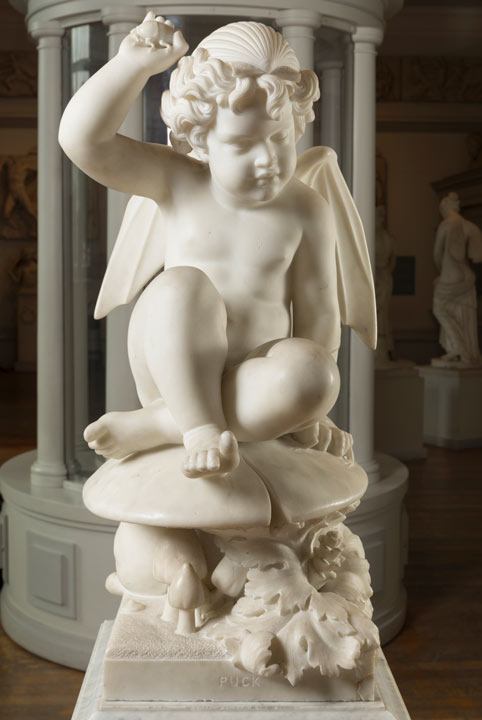
Puck by Harriet Hosmer (probably 1855-1859) Walker Art Gallery
In recent years, through the renewed celebration of LGBT+ histories, there has been speculation about Gibson’s own sexuality. Not long after arriving in Rome he wrote to a friend, fellow sculptor John Barber Crouchley (possibly 1790-1855) in Liverpool: “I think, dear Crouchly (sic), it is time we should get married, perhaps I may bring home a Roman wife” (1824). However, Gibson never married and there is no surviving evidence that he ever had a sexual relationship with either a woman or a man. Instead, he formed close friendships with many women including his important Liverpool patrons Margaret Sandbach (née Roscoe 1812-1852), Emily Huskisson (née Milbanke 1777-1856) and Eleanor Preston (née Rogers 1826-1891). Gibson often spent time alone in the company of these married women, which was uncommon at the time.
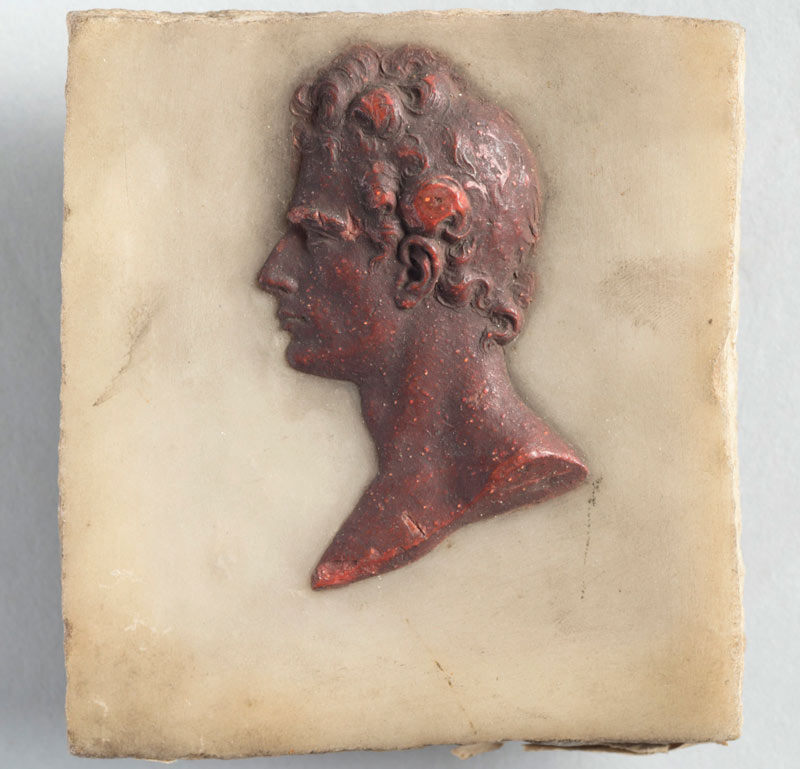
John Gibson by John Barber Crouchley Walker Art Gallery
It is possible Gibson had a long-term relationship with the Welsh artist Penry Williams (1802-1885). Their relationship may have spanned almost 40 years. Williams studied under the Swiss painter Henri Fuseli (1741-1825) at the Royal Academy. He moved to Rome in 1827 where he remained for the rest of his life. Williams became one of the leading painters in Rome and his studio, like Gibson’s, was widely visited by an influential cosmopolitan circle of patrons including Margaret and Henry Sandbach (1807-1895).
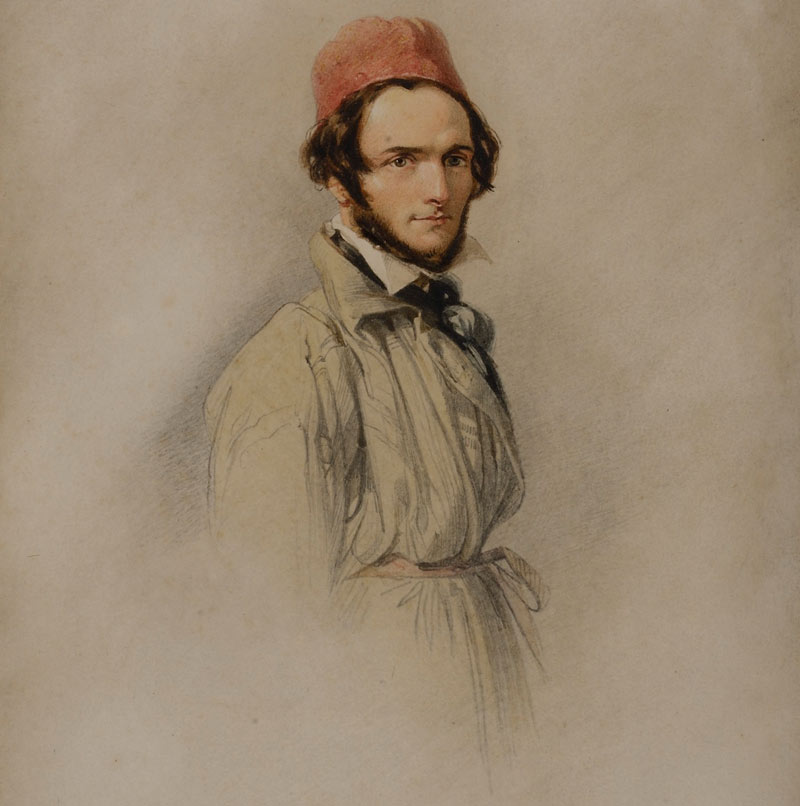
John Gibson RA (1845) by Francis Hargreaves (1804-1877) copied after Penry Williams (1839) Walker Art Gallery
Gibson and Wiliams were very close, and they spent much of their time together. Between 1839 and 1845 Williams made many portraits of Gibson. They were travelling companions and Gibson’s letters show their close friends often enquiring about the well-being of Williams and urging the two men to visit during their time in Britain. In a letter to Benjamin Gibson (1811-1851) dated 1844, Gibson and Williams together convey news of their trip and organise their life in Rome. In 1854, after the death of Margaret Sandbach, Williams again accompanied Gibson to England, visiting Henry Sandbach at Hafodunos Hall near Abergele for almost three weeks.
In the summer of 1864 Gibson and Williams set out for Switzerland, but their journey was cut short at Leghorn (now Livorno) owing to Gibson’s health. After a few periods of illness in 1865, Gibson had a stroke and was paralysed. Williams attended Gibson’s bedside at via Babuino 144 during his final days. He recorded Gibson’s last moments in this intimate drawing that shows Gibson in bed receiving a telegraph from Queen Victoria.

Mr Gibson's Last Moments After the Reception of the Queens Telegraph Message by Penry Williams (26 January 1866) Walker Art Gallery
Williams was also the executor of Gibson’s will. Following the example of Canova and Thorvaldsen, who had left their studio contents to their own countries, Gibson bequeathed his unsold statues and models to the Royal Academy, along with the bulk of his fortune to display and preserve them. He left various sums of money to his family and friends. The highest amount £500 (now about £55,000) was received by Williams.
Williams also died unmarried in Rome in 1885 and there is currently no record of him having had an intimate relationship throughout his life.
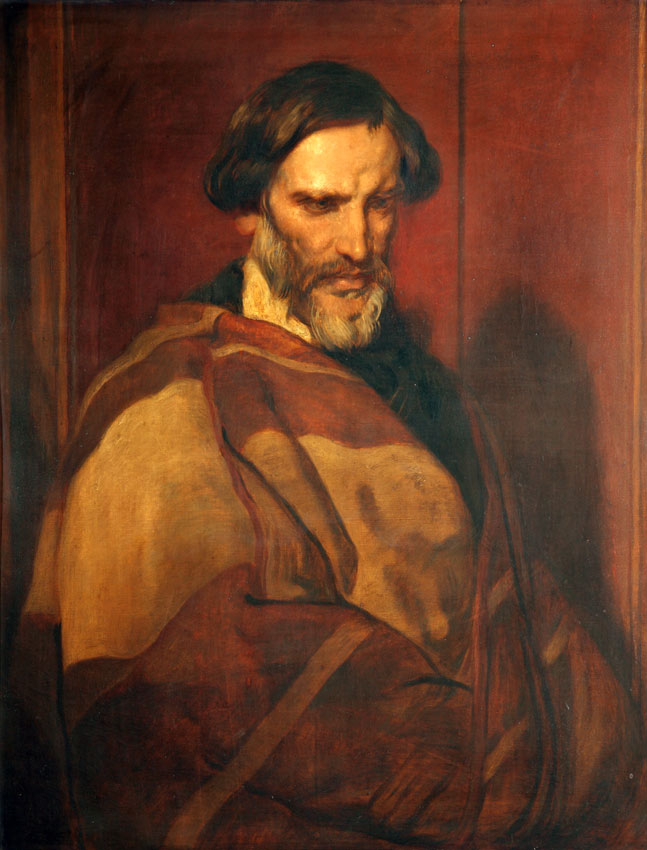
John Gibson by Edwin Henry Landseer (about 1844-1850) Walker Art Gallery
